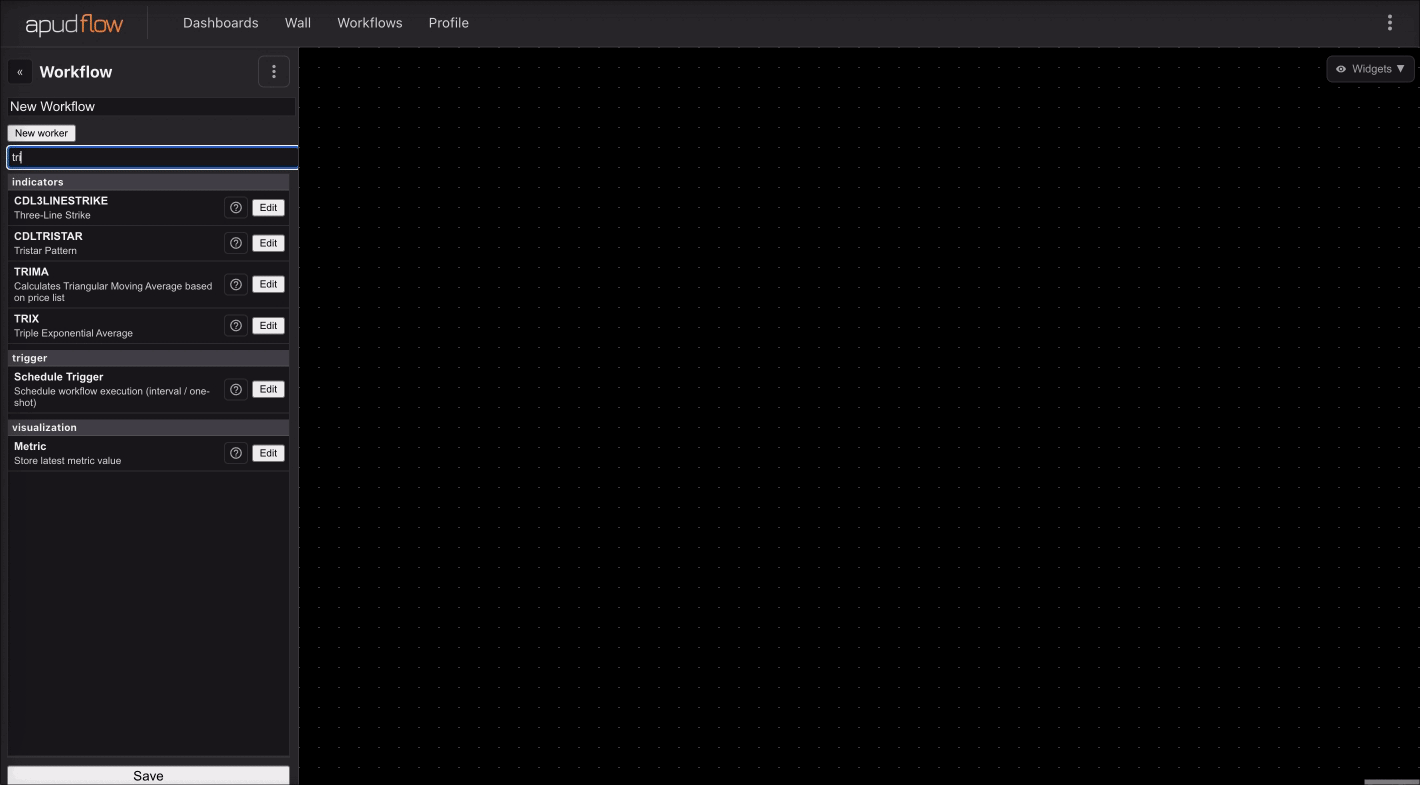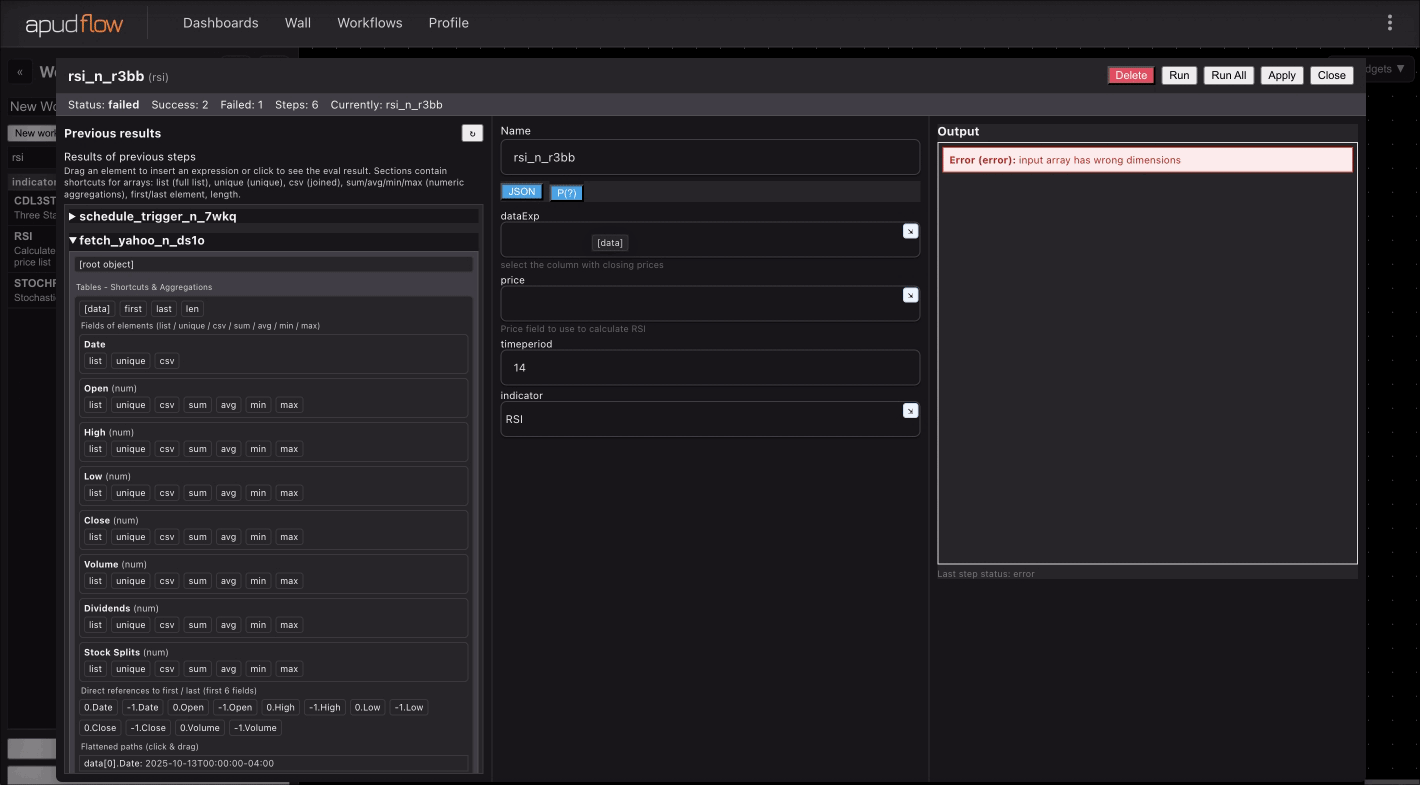Bollinger Bands
Type:
bbands• Category:indicators
Description
Calculates Bollinger Bands based on closing price list
Parameters
| Name | Type | Description | Required | Default |
|---|---|---|---|---|
dataExp | string | select the column with closing prices | no | |
price | string | Price field to use to calculate Bollinger Bands | no | |
timeperiod | number | Number of periods to use for Bollinger Bands calculation | no | 5 |
nbdevup | number | Number of standard deviations for the upper band | no | 2 |
nbdevdn | number | Number of standard deviations for the lower band | no | 2 |
matype | number | Moving average type | no | 0 |
Help
Bollinger Bands
Description
The Bollinger Bands worker is an indicator used in financial analysis to calculate Bollinger Bands based on a closing price list. This indicator provides a volatility-based measure of the price movement of a financial instrument.
What does this worker do?
The Bollinger Bands worker calculates three lines:
- The moving average (usually a 20-period simple moving average)
- The upper band, which is the moving average plus a specified number of standard deviations
- The lower band, which is the moving average minus a specified number of standard deviations
How to interpret the results
The Bollinger Bands worker provides a visual representation of the price volatility and can be used to identify trends, predict price movements, and detect overbought/oversold conditions.
Interpretation guidelines:
- When the price touches or crosses above the upper band, it may indicate overbought conditions and a potential reversal or correction.
- When the price touches or crosses below the lower band, it may indicate oversold conditions and a potential reversal or bounce.
- When the bands are narrow, it may indicate low volatility and a potential breakout.
- When the bands are wide, it may indicate high volatility.
Parameters
The Bollinger Bands worker accepts the following parameters:
dataExp: Select the column with closing pricesprice: Price field to use to calculate Bollinger Bandstimeperiod: Number of periods to use for Bollinger Bands calculation (default: 20)nbdevup: Number of standard deviations for the upper band (default: 2)nbdevdn: Number of standard deviations for the lower band (default: 2)matype: Moving average type (default: 0, which represents a simple moving average)
Usage example
To use the Bollinger Bands worker, simply select the column with closing prices, choose the price field, and adjust the parameters as needed.
Visualizing the Bollinger Bands
For a visual representation of how to use the Bollinger Bands worker, please see the following GIFs:
Full GIF
[](https://pub-6c7cc7f707d94ca98153d59a039b9a3d.r2.dev/indicator_full.gif)
Short GIF
[](https://pub-6c7cc7f707d94ca98153d59a039b9a3d.r2.dev/indicator_short.gif)
Additional knowledge
Bollinger Bands were developed by John Bollinger in the 1980s. They are a popular technical analysis tool used to gauge volatility and identify potential trading opportunities. The bands are not a directional indicator, but rather a volatility-based measure that can be used in conjunction with other technical and fundamental analysis tools.